The Meizu M3 Note is the next generation of the Meizu M2 Note smartphone. If you are reading this article, most likely you already own a Meizu M3 Note smartphone, with which we congratulate you.
We present you a guide for using Meizu M3 Note, answers to frequently asked questions, helpful tips, etc.
How to take a screenshot on Meizu M3 Note
Using the built-in function in the Android operating system, you can take a screenshot not only on Meizu M3 Note, but also on any Android smartphone.
To take a screenshot on Meizu M3 Note, you need to do the following:

- Press and hold the button Inclusions and the button Volume Down simultaneously for 2-3 seconds.
- If you're having trouble, chances are you didn't press the buttons at the same time. Try again.
- All screenshots are saved in the gallery in a special folder Screenshots.
How to find out IMEI on Meizu M3 Note
You can use several methods to find out the IMEI number on your Meizu M3 Note smartphone.

Note: Meizu M3 Note has two SIM cards, so the smartphone has two IMEI numbers.
Meizu M3 Note factory reset
You have two options to factory reset Meizu M3 Note. Make sure you back up your data before doing any of these.
Factory reset Meizu M3 Note via Settings menu
The factory reset function on Meizu M3 Note is in the menu Settings - About phone - Memory - Reset settings.

Resetting Meizu M3 Note settings via recovery mode
No matter which recovery mode you use on your Meizu M3 Note smartphone, you can do a factory reset through it.
- First, you need switch off Meizu M3 smartphone
- Then press and hold the button Volume Up and the button Inclusions for a couple of seconds until the Meizu logo lights up on the screen.
- After that, you will go into recovery mode.
- In the menu, select the item " Clear data". Click on the “ Start”.
Official firmware for Meizu M3 Note
Official firmware is the default firmware version that comes with your smartphone. You can find and download the official firmware for Meizu M3 Note on the smartphone support forum.
Fix GPS Error on Meizu M3 Note
If GPS stops working on your smartphone, you can run a full scan. To do this, open the dialer application, and dial the code *#*#1575#*#* ... Wait for the process to complete.
How to enable USB debugging on Meizu M3 Note
Quite often we are asked how to enable USB debugging on the Meizu M3 Note smartphone. It couldn't be easier! Open the menu "Settings" - "About phone" and press 7 times Flyme Version... After that, you will receive a message that developer mode is enabled.
How to check Flyme OS version on Meizu M3 Note
As you know, Meizu M3 Note runs on Android operating system with Flyme OS interface. If you want to know the version of Flyme OS, you need to open the menu Settings and go to the section " About the phone "... Here you will find the version Flyme OS.
How to record a conversation on Meizu M3 Note

It is quite easy to record phone calls on Meizu M3 Note smartphone. When you call someone or someone calls you, you will see the icon “ Recording"(Record). All recorded calls are saved in internal memory in the Recorder / call folder.
That concludes our Meizu M3 Note guide. If you still have any questions, ask them in the comments below.
One of the most high-profile novelties of the late spring-early summer of 2016 was the Meizu m3 note smartphone, which offers a lot of possibilities for a humane price. The device is now undergoing serious testing on the site, but before releasing a detailed review, we wanted to take a close look at the shell of the device, Flyme OS 5.1.3.1.
All screenshots and description refer to Flyme OS 5.1.3.1G, based on Android 5.1 and running on the global version of Meizu m3 mote
Lock screen
Traditionally, notifications that appeared in the curtain flock to this area. There are no special features here: if the pop-up window supports quick actions (regular Mail, the official Gmail client, Play Music), then they will be displayed here, with the rest of the notifications you can either open the program or remove them with a swipe. There is also a camera launch.

At the same time, the lock screen turns out to be even less functional than in stock Android, because, for example, there is no minimization and expansion of notifications. In addition, Meizu has not added unlocking by a pattern, only a password or a fingerprint scanner.
In the settings there is also an item "Guest mode", which is launched from the lock screen. To start it, on the password entry screen, you must enter a different code (1234 by default).

In this mode, stock software is available to users, the owner of the device can also prohibit making calls from this position. The very first launch will take a long time, about 20 seconds, but subsequent starts of this mode will take about 3-4 seconds.
Desktop
Meizu followed the iOS path when building the interface logic, that is, there is no list of installed applications, everything is located on the desktops. By the way, the standard calendar icon also got a useful feature from the Apple system - the date on the label corresponds to today's date.


Meizu m3 note
To organize the order on the desktop, there are folders, it seems, there is no limit on the number of programs inside - we were able to fit 38 icons into one folder, then the process of dragging and dropping shortcuts got tired.
There can be nine desktops in total, each of them is marked with a letter of the Latin alphabet, and the first screen is marked with a house icon. A quick transition to desktops is also available, for this you need to click on the letter of the required desktop.


A long press on an empty desktop space opens the customization window. The first item "arrange" allows you to quickly move icons and widgets between desktops, but does not allow moving the latter entirely. But if you sketch the icons at random and shake the device, they will align on the grid (4x5 by default).





The "Wallpaper" and "Widgets" tabs allow you to change the screen saver on your desktop and select widgets, respectively.
Personalization
The appearance of the desktop can be customized thanks to the separate application "Personalization". There are third-party themes with custom icons, wallpapers and fonts. The choice is huge:




By the way, themes contain pre-installed icons for third-party software, but if you want, you can turn them off in "Settings" (item "Personalization").

Standard

Meizu
Multitasking menu
Swiping up from the bottom of the screen will open the multitasking menu. Individual applications have the function of working in a window - the screen is divided into two parts, it looks exactly the same as in older versions of the TouchWiz shell. Unfortunately, not all programs support this function. A similar implementation is going on in stock Android, but the Chinese turned out to be faster in this matter.





The list of running programs is represented by cards, between which the user swipes up and down, if you swipe the card to the right or left, the application will leave the list and be unloaded from memory. If you perform a long hold on the card, the Application will be fixed in memory (the OS will not unload it). The latter also has a visual designation in the form of a small lock icon next to the name of the program. At the very top of the list there is a button "Clear all" for unloading software that the user has not forbidden to remove from memory.
Notification shade
The notifications in the top panel are functionally fully consistent with what we see on the lock screen. After a long hold on the notification, an item opens where the user can prevent this program from leaving marks in the curtain or set a special priority so that messages from this program are always at the top of the list.
The notification panel has a separate item in the "Menu", where you can disable notifications altogether, allow them to activate the screen if the smartphone is not in your pocket, and also modify the status bar, hiding unnecessary indicators.




Above the notifications are quick actions, with one swipe, the user sees only the first 4 switches, and if you swipe again from top to bottom, the full list will open. Items can be swapped: when held on the toggle, it detaches from the lattice, after which the user moves it to a convenient place (just like moving icons on the desktop).
Gestures
In "Settings" - "Accessibility" - "Quick wake-up" there are possibilities to customize the gestures available from the locked screen, from waking up the device and right up to launching programs. The latter is difficult to implement if you have a fingerprint scanner or password.


For example, let's fix the “Calculator” activation to the “C” gesture. When the symbol is displayed on the locked screen, the user will feel the vibration and see the lock screen. To actually launch the software, you need to touch the scanner or enter a password, but the OS does not inform about this in any way.
However, if you have fixed the flashlight activation to the gesture, then the flash is immediately activated without turning on the screen backlight.
Smart Touch
A software feature that allows you to use disparate actions from a single menu. When the function is activated, an element appears on the screen that looks like a trackball, which understands touches, clicks and swipes. The SmartTouch is linked to the screen lock, Back and Home functions, and other actions.



The real usefulness of the function is questionable, but if we imagine that for some reason a single physical button no longer works, then it is quite possible to justify the existence of this program element.
Built-in programs
Most of the full-time programs give off asceticism: a minimum of features, a minimum of settings, a simple appearance. For example, the "Calendar" is significantly inferior in visibility not only to third-party advanced software, but also to the "Google Calendar", however, the presence of Agenda is almost the only important screen for most users, so there is no particular reason to install an alternative.








The "Gallery" is scanty at all, but it shows pictures, supports albums - it is also enough for the majority. The Alarm Clock app actually hides the familiar Clock features, including stopwatch and world time. "Explorer" is also as simple as a cork.









In the "Calculator" there was a place not only for a solution with engineering capabilities, but also for a currency converter. Comfortable. "Useful" hides the flashlight and less useful functions in everyday use. "Messages" and the dialer are also as simple as possible. In the latter, only a search by contacts will please, which compares the input of both names and numbers.










Notes in the "Notes" can be divided into groups (notebooks), apply different themes to them, attach pictures, leave voice notes or draw. But there is no complex formatting here, which, however, is not critical for a simple note-taking.






The built-in "Dictaphone" is able not only to record sound, but also allows you to set shortcuts for a certain time right during the recording, and during playback - quickly jump to the marked time intervals.



Well, what about without "Security" in the Chinese firmware?

The built-in Mail application combines a pleasant look and feel with a minimum of functionality. But the worst thing is not even that the user cannot work normally with mail that is stored on servers, but a banal inability to use two-factor authentication. As a result, I basically couldn't connect my mailbox until I turned off one of the best security solutions to date.



"Browser" is globally close to most of its competitors, one of the unusual features can be noted the function "No pictures", when activated, all links will open without images if the user is not connected to Wi-Fi. Someone may like the "Night mode".






Night mode

One button
Meizu m3 note received only one interface control, which in practice turned out to be extremely convenient: touching the button replaced the "Back" action, pressing is equivalent to clicking on "Home", and the list of running applications opens by swiping from the bottom edge of the screen upwards. If you hold down the button, the smartphone will be locked. Absolutely any software adequately works with this system of actions.
But there is also one serious drawback - the button cannot be customized in any way, which means that the same launch of Google Now (and even more so Now on Tap when upgrading to Android 6.0) cannot be called, for this you have to keep the icon on the desktop. But all that was needed was to add the setting “run the favorite application before double-clicking”.
Battery
In the Flyme OS settings, there are also such features as turning on / off the device according to a schedule and optimizing the power supply - both functions will help to save battery consumption, and the first one will also eliminate annoying notifications, for example, at night.


Shoals of localization
Although the smartphone has a global (international) version of the firmware, the Chinese roots no, no, and they will seem. For example, at the initial stage of registering a Flyme account. Can you guess where the fields are?

Or is this - what does this notification tell us?

And this can be found in the built-in calendar:

I can't say that there are a lot of such mistakes, but the very fact of their presence leads to a stupor, because to figure out what the OS wants from me in such cases, you can only use the scientific method of typing.
Verdict
I would like to note the overall cleanliness of the interface - minimalistic flat icons, calm colors and neat fonts are harmoniously combined with each other. At the same time, the firmware interface in some places is slightly out of the general neat style, frustrating with too large elements, then non-standard fonts, or simply a pile of elements.

The additional functionality here is not fantastic, but it still cannot be said that it is stingy - for the average person there are even more opportunities than necessary, but for advanced users who like to install Cyanogen or Xposed, the settings will not be enough. On the other hand, there are more fun things in life than endless digging through settings.
Greetings, dear club members and novice users of Meizu smartphones. In today's release, I will tell you about the capabilities of the mTouch key located under the screen of your Meizu.
What are the bottom panels?
Usually under the screen of Android smartphones there is a panel of three keys: back, home and recent applications. Some manufacturers make the panel on-screen, while others make it a touch panel. In the first case, all three keys are part of the display, in the second, they are made as a separate touch panel. There is also a third option - a physical center button and two touch buttons on the sides. Unfortunately, each of these options has its drawbacks.
For example, on-screen buttons take up part of the display and make less usable space on it.
You will constantly touch the touch buttons when watching a movie or reading books, and the hybrid version (a physical button and two touch buttons) has the same drawback.


And if the manufacturer also decides to install a fingerprint scanner under the touch panel of the buttons, then the "second chin" of the smartphone will become even longer.
Why is the mTouch key better?
The mTouch key acts as both a touchpad, a fingerprint scanner and a physical button at the same time. How it works?

When the screen is off, pressing the button turns on the display. If you have configured the fingerprint scanner, then during the press, the smartphone will analyze your fingerprint and have time to unlock the display, this is very convenient, you pressed the button and the smartphone was immediately unlocked.
When the display is on, pressing the button emulates the Home key and you are returned to the main screen. However, the button is also a touch surface, so with a simple touch, the mTouch will act as a touch back key.

But what about "latest apps"? There is no separate action for them on mTouch, but the developers have made calling them even more convenient. You just need to swipe up from the bottom edge of the screen. You get used to this gesture very quickly, it is simple and convenient.
Turn on / off the screen
We already know that to turn on the screen, just press the mTouch button with the fingerprint scanner activated. But what happens if you hold the key with the same finger when the screen is already on? After one and a half seconds, the display will simply turn off. This is very convenient, especially when you are holding your smartphone with one hand.
Holding the smartphone
Do you know what else I like about this particular version of the bottom panel? The space on the sides of the key is free, so if you are reading a book or watching a video on the subway, for example, you can use this place to hold your smartphone without fear of accidental clicks.

Application Protection and Scanner Configuration
Since we have a series of articles for beginners, I wanted to talk about the procedure for setting up the scanner, but we already have a detailed article about this from Kirill Sergeev. In the text, Kirill also talks about what exactly can be protected with a fingerprint scanner. So if you haven't read that material, then be sure!
What can be done in Flyme 6.0?
In Flyme 6.0 mTouch will become even more functional. For example, in game mode, you can turn off the reaction to touch in toys, and with a double tap, you can call the camera or music player.
Conclusion
In conclusion, I would like to draw your attention to one more small detail. Meizu is doing great work on the continuity of the user experience. So their mTouch key is now installed on all current smartphones and has the same functionality, so if someone switches from M1 Note to Pro 6 Plus, for example, then he will not have to retrain anything: restore the backup and use the same device as if ( with better screen, performance, etc.).
The proprietary Flyme shell installed on Meizu contains so many useful features that we simply had to review this OS.
The Flaim shell has created almost the most user-friendly status bar, because it has no division into parts, and, in addition, there are additional menu items for managing wireless interfaces directly from the status bar. And also in the line there is a convenient display brightness control, which the operating system developers installed in the earliest versions of Flyme operating systems.

File manager
Right from the start screen of the explorer, you can launch those programs or applications that have been sorted into categories, as well as connect to the local network, see the status of the internal memory or open files on the memory card. A very cool feature is the ability to select several files at once by swiping your finger across them, and a nice bonus is the ability of the file manager to create archives and work with them.
If you are not a supporter of connecting your phone to a computer via a cord, then in this OS you can make a portable FTP server out of your gadget and manage files through a browser or a special program on a PC.

Launcher
Very convenient in size in this shell is a 4x5 desktop grid with an additional panel at the bottom, and there is also no separate menu - all applications are installed directly on the desktop. Another plus is that many standard applications are used infrequently, and therefore they were hidden in a separate folder.
By "pinching" the screen, you will open a special menu in which you can swap desktops, add new widgets or change the wallpaper.

Keyboard and additional applications
In the very first versions of Flyme OS, the manufacturer used its own keyboard, but then switched to TouchPal, which has a good built-in dictionary, with a long press you can bring up a menu of symbols, and also has a huge number of themes and various settings. TouchPal is more functional and familiar to ordinary users - sometimes it is better to use a ready-made solution than to reinvent the wheel.
In addition to the standard calculator, which you will not surprise anyone in our time, there is also an engineering calculator, as well as a converter of various quantities and currencies. The cool thing is that the exchange rate is regularly updated via the Internet, and therefore you will always be correctly informed about the value of the currency.

Contacts and call window
Initially, it may seem that the dialer in this OS is very simple and equipped with only basic functionality. This is partly true, because there is no function to quickly jump to the "Favorites" section or support for the SmartDial function. But not everything is so simple - the operating system has the ability to block unwanted calls and SMS, you can record calls manually or automatically, or use these functions for individual contacts.

SMS messages
The main difference from competitive operating systems is the ability to mark SMS as read immediately from the notification feed. This can be convenient if you often receive one-time confirmation codes and do not want to see the annoying "one" on the message icon.

Browser
It is very laconic, elegant and simple in the Flaym shell, it supports reader mode (icon at the top right), as well as night and full screen. The main page is decorated with icons of the most popular sites for the user, at the top is the search bar, and the address is also there. Below is a log of visited sites, a little higher is a navigation bar, with the help of which it moves back and forth through the pages and switches to the main window. From the settings, you can go directly to the file download folder, refresh the page, or open the computer version of the page.

Registration
The Flyme operating system allows the user to set one of several thousand different interface themes, launcher fonts, desktop wallpapers and much more. Initially, out of the box, the smartphone will have a standard Flyme theme with classic icons. In the options, you can change the options for displaying icons.

Photo gallery
Surely you are using the gallery exclusively for viewing pictures and images. But if you become the proud owner of Meise, then take the trouble to get to know the gallery better. Its main screen is divided into photos taken by the camera and the rest of the folders - photos from Instagram, screenshots and more.
Plus, if you have a Smart TV at home, then you can send photos directly to the TV screen by turning on the broadcast from the photo gallery. There is also all the detailed information about what parameters the photo has and where it was taken.

But that's not all. By clicking on the "Change" button, you will find yourself in a menu containing a huge number of parameters:
- The first tab contains filters, the number of which even Instagram can envy;
- In the settings - parameters of brightness, contrast, white balance and much more;
- The tools also provide many possibilities: inserting arrows, text, blur effect, brush for painting and blurring personal information;
- The last button is responsible for the function of cropping the photo and rotating it. Nice trick - you can rotate photos right in the gallery using two fingers.

Camera
The functionality of the camera, on the one hand, is quite simple and straightforward, but on the other hand, there are a lot of different parameters, such as the shooting mode (button at the bottom right), manual settings, enabling a level or grid. Lovers of selfies will love the image processing function, those who are fond of sports - the possibility of slow-motion shooting, and those who love nature - a good macro. The advantage is the ability to shoot directly in the Gif format, which is very convenient and allows you to comfortably edit such videos in the future.

Music and video player
The video player in Flyme can play the mkv format, and also supports almost all possible video codecs, multiple audio tracks, and even playback of subtitles. There is also a windowed mode so desirable for many users.
Traditionally, Meizu pays a lot of attention to music - the media player is as functional as possible. First, it plays any playlists - FLAC, CUE, APE and others. Secondly, songs are very conveniently sorted here both in the general playlist and in different folders. And thirdly, it was not without a powerful equalizer with a bunch of settings, which allows the user to adjust the sound as comfortably as possible to suit his needs.

Security
There are several useful functions here at once:
- Cleaning up memory and garbage. This includes removing residual files, and cleaning the cache, and removing various garbage from applications, as well as searching for the largest files in order to quickly clean up space on the device.
- RAM accelerator. This utility closes programs that are not currently in use to free up RAM.
- Spam blocking. Unwanted SMS and calls are blocked here.
- Software permissions. Here you can have maximum control over each application and its access to the various functions of the smartphone.
- Power management. Here the user has the opportunity to customize the autonomous operation of the device for himself or to disable the operation of some programs in the background.
- Search and removal of viruses. It is practically a built-in antivirus for your Meizu.

Gesture control
Each new Meizu device has a built-in system for flexible smartphone control using gestures. For example, a double tap turns on the display backlight, swipe to the right or left on the dimmed display switches songs in the media player, and swipe up to unlock the device. You can customize these and other gestures by going to the "Accessibility" settings item.
conclusions
Undoubtedly, the Flyme casing only gets better over time - more functionality and more features, more comfort. The advantage is also the fact that the gaps and disadvantages in it are also quickly eliminated - let's take the replacement of the built-in keyboard with TouchPal. Which Flyme OS features do you like the most?
Our small review will tell you about the new program that is included by default in the MEIZU Android firmware. You will find out why the application is useful and decide for yourself whether it is worth leaving it on your phone or should be deleted to save space.
What it is
Hot Apps Meizu Is a program installed on all smartphones of the Meizu line. A kind of Play Market analogue is designed to inform the user about the most current software updates or the best novelties. In the Google Play store, it can be difficult to immediately find the best software, or one that is relevant to your needs, and a large menu only complicates the task. All this is simplified by the Hot Apps application.
Almost the entire line of Meizu phones does not have Google services preinstalled, so using Hot Apps you can download them first. In general, this is good - the phones are not cluttered with unnecessary software.

How to use the program
Hot Aps has an interface similar to the Play Market. It also displays applications. However, they are not formed according to different categories. All software is laid out on one first page. To view it, you just need to scroll down the page. For convenience, there are pointers on which section the user is currently on:
- recommended applications;
- hot new games;
- popular apps of all time.
Many habitually try to find a search to find the material of interest. Let's say right away that he is not here. All program lists are generated automatically based on demand for a certain period of time. The more popular a particular program becomes among users, the more likely it is to get into Meizu's Hot Apps.
This approach allows you to always stay in trend. It becomes impossible to miss all the hits released this week. Thanks to paragraph "Popular Apps of All Time" the most necessary software is always with you. There are times when you have to change the OS on your smartphone. To facilitate the search: the popular Privat24, Facebook, Vkontakte, Odnoklassniki and much more already have a separate item in Hot Apps. It is enough to install everything from it, and the smartphone is again connected to all social networks and other important applications.

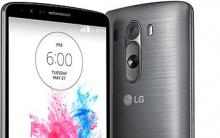
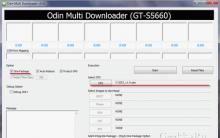

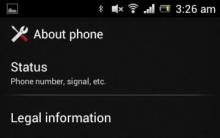
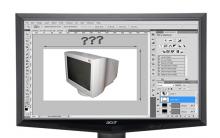
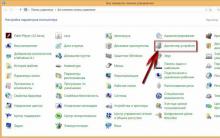




The value of avatars in psychology
The value of avatars in psychology
How to stress a letter in MS Word
What does it mean if a person's avatar
How to Create Your Own Twitter Moment